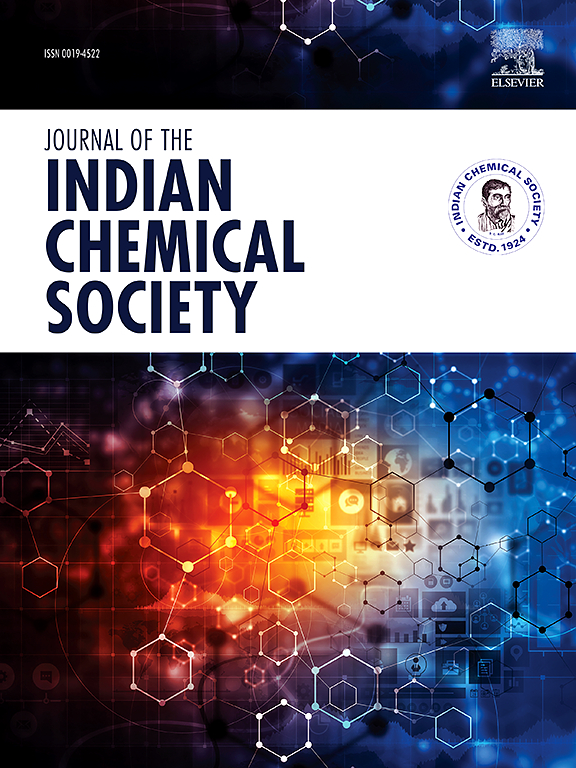卡莫辛偶氮染料水溶液脱除后降解产物的分光光度分析
IF 3.4
4区 化学
Q2 CHEMISTRY, MULTIDISCIPLINARY
引用次数: 0
摘要
本文研究了以氧化铝(Al2O3)为活性吸附剂,以抗坏血酸为催化剂,用分光光度法对水溶液中的卡莫辛染料(E122)进行了吸附,并对去除后的染料降解产物进行了分析。结果表明,使用抗坏血酸作为强还原剂可以加速吸附过程。考察了吸附剂用量、染料浓度、接触时间、溶液pH、温度等不同影响因素的影响。卡莫辛染料最大吸附量(qmax)为97 mg g−1。此外,利用紫外可见光谱和红外光谱技术对卡莫辛染料的降解产物进行了吸收测定。该方法可成功应用于废水处理和食品工业。本文章由计算机程序翻译,如有差异,请以英文原文为准。

Spectrophotometric analysis of the degradation products of carmoisine azo dye after removing from aqueous solutions
In this work, the removal of carmoisine dye (E122) from aqueous solutions by adsorption on alumina (Al2O3) as an active adsorbent and using ascorbic acid as a catalyst, followed by analysis of the degradation products of the removed dye, has been investigated spectrophotometrically. The obtained data showed that using ascorbic acid as a strong reducing agent can accelerate the adsorption process. The impact of different significant factors, including adsorbent dosage, dye concentration, contact time, pH of the solution, and effect of temperature, was carried out. The maximum adsorption capacity (qmax) of carmoisine dye was found to be 97 mg g−1. In addition, the degradation products of carmoisine dye were investigated by measuring the absorption using UV–visible spectroscopy and FTIR technique. The method can be applied successfully in waste water treatment and food industries.
求助全文
通过发布文献求助,成功后即可免费获取论文全文。
去求助
来源期刊
CiteScore
3.50
自引率
7.70%
发文量
492
审稿时长
3-8 weeks
期刊介绍:
The Journal of the Indian Chemical Society publishes original, fundamental, theorical, experimental research work of highest quality in all areas of chemistry, biochemistry, medicinal chemistry, electrochemistry, agrochemistry, chemical engineering and technology, food chemistry, environmental chemistry, etc.

 求助内容:
求助内容: 应助结果提醒方式:
应助结果提醒方式:


